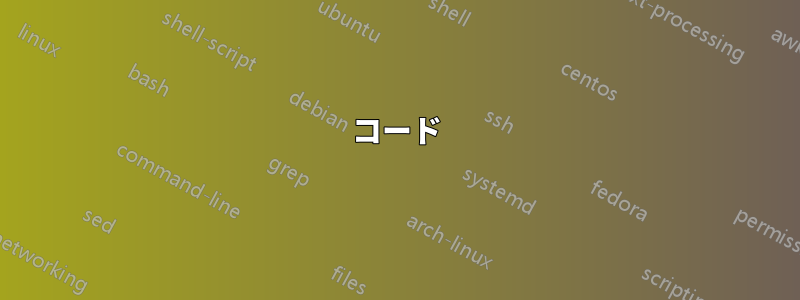
\newglossaryentry の説明の一部に、複数行の式 ([ および ] または $$ $$ を使用した既存の 1 行の式は中央揃えではないため、適切な列に対して中央揃えが望ましい) が必要です。
つまり、基本的には、用語集の列の中央に、単一行と複数行の数式を配置したいのです。
ありがとう!
PS: 私はこれから何か得られると思いました:ここにリンクの説明を入力してください でもできなかった...
\documentclass[twoside]{amsbook}
\usepackage[colorlinks]{hyperref}
\usepackage[xindy,counter=section,sanitize={name=false},style=index]{glossaries} %[toc]% %\glstoctrue
\usepackage{nomencl}
\makeglossaries %has to be after \usepackage{hyperref}
%
\glossarystyle{long3col}
%\glossarystyle{super3col}
\setlength{\glsdescwidth}{0.6\textwidth}
\setlength{\glspagelistwidth}{0.15\textwidth}
\newglossaryentry{AffineVariety}
{
name=Affine Variety,
description={Affine varieties are defined to be anything that looks like the set of common zeros of a collection of polynomials. E.g., $A = \mathbb{C}[X]$ is the ring of polynomials in $X$ with complex coefficients. Let $f=X-1 \in A$ and its set of zeros, $Z(\{f\})=\{1\}$ is an example of an affine variety.}
}
\newglossaryentry{RemovableSingularity}
{
name=Removable Singularity,
description={Formally, if $U \subset \mathbb{C}$ is an open subset of the complex plane $\mathbb{C}$, and $a \in U$, and $f: U\backslash\{a\} \to \mathbb{C}$ a holmorphic function, then $a$ is a removable singularity for $f$ if there exists a holomorphic function $g: U \to \mathbb{C}$, coinciding with $f$ on $U\backslash\{a\}$. It is said that $f$ is holomorphically extended over $U$ if such a $g$ exists. A simple example is the function $$f(z) = \frac{\sin(z)}{z}$$ at $z=0$ (even this: \[f(z) = \frac{\sin(z)}{z}\] doesn't center.). The singularity, due to the indeterminate form, can be removed by defining $f(0)=1$, which is the limit of $f$ as $z$ approaches zero.}
}
\newglossaryentry{TetrahedralCoordinates}
{
name=Tetrahedral Coordinates,
description={Coordinates useful in plotting projective three-dimensional curves of the form $f(x_0,x_1,x_2,x_3)=0$, which are defined by
% \begin{minipage}[t][5cm][b]{0,5\textwidth}
% \ensuremath{
% $$ {\setlength\arraycolsep{0.2em} \begin{eqnarray} x_0 = 1-z-\sqrt{2}\,x \\ x_1 = 1 - z + \sqrt{2}\,x \\ x_2 = 1+ z+ \sqrt{2}\,y \\ x_3 = 1 + z - \sqrt{2}\,y \end{eqnarray} } $$
% \end{minipage}
% }
}
}
\makeglossaries
\begin{document}
Consider the equation
\begin{equation}
e = m * c^2
\end{equation}
in which \gls{AffineVariety} is here, but not here \gls{TetrahedralCoordinates} oh and this \gls{RemovableSingularity}.
\printglossary
\end{document}
答え1
コンテンツをminipage環境内にラップすると、表示される数式を環境の中央に配置できますlongtable。ただし、これを毎回行うのは面倒で、柔軟性に欠け、エラーが発生しやすくなります。
より良いオプションは、パッケージ\newcolumntypeのコマンドを使用しarrayて表形式環境用の新しい列タイプを設定し、それを使用して新しい用語集スタイルを定義することです。my3colこのスタイルは に基づいていますlong3colが、説明の列タイプが変更されています。
glossaries以前にロードしたので\glsdescwidth、新しい列タイプが定義されたときに使用できます。これは、それを利用する新しい用語集スタイルを設定する前に定義されます。最後に、新しいスタイルがアクティブ化されます。
コード
\documentclass[twoside]{amsbook}
\usepackage[colorlinks]{hyperref}
\usepackage[xindy,counter=section,sanitize={name=false},style=index]{glossaries} %[toc]% %\glstoctrue
\usepackage{nomencl}
\setlength{\glsdescwidth}{0.6\textwidth}
\setlength{\glspagelistwidth}{0.15\textwidth}
\usepackage{array}
\newcolumntype{G}{% This is defining a new column type for tabulars which we will use to define the longtable environment in the new glossary style
>{\begin{minipage}[t]{\glsdescwidth}}{c}<{\end{minipage}}%
}
\newglossarystyle{my3col}{% call that style my3col
\setglossarystyle{long3col}% base it on long3col so we don't need to define the everything from scratch
\renewenvironment{theglossary}% here's the bit we want to alter
{\begin{longtable}{lGp{\glspagelistwidth}}}% just change the central column to our new column type, G
{\end{longtable}}}
\glossarystyle{my3col}% we want to use the new style!
\makeglossaries %has to be after \usepackage{hyperref}
\newglossaryentry{AffineVariety}
{
name=Affine Variety,
description={Affine varieties are defined to be anything that looks like the set of common zeros of a collection of polynomials. E.g., $A = \mathbb{C}[X]$ is the ring of polynomials in $X$ with complex coefficients. Let $f=X-1 \in A$ and its set of zeros, $Z(\{f\})=\{1\}$ is an example of an affine variety.}
}
\newglossaryentry{RemovableSingularity}
{
name=Removable Singularity,
description={Formally, if $U \subset \mathbb{C}$ is an open subset of the complex plane $\mathbb{C}$, and $a \in U$, and $f: U\backslash\{a\} \to \mathbb{C}$ a holmorphic function, then $a$ is a removable singularity for $f$ if there exists a holomorphic function $g: U \to \mathbb{C}$, coinciding with $f$ on $U\backslash\{a\}$. It is said that $f$ is holomorphically extended over $U$ if such a $g$ exists. A simple example is the function
\[f(z) = \frac{\sin(z)}{z}\]
at $z=0$ (even this:
\[f(z) = \frac{\sin(z)}{z}\]
doesn't center.). The singularity, due to the indeterminate form, can be removed by defining $f(0)=1$, which is the limit of $f$ as $z$ approaches zero.}
}
\newglossaryentry{TetrahedralCoordinates}
{
name=Tetrahedral Coordinates,
description={Coordinates useful in plotting projective three-dimensional curves of the form $f(x_0,x_1,x_2,x_3)=0$, which are defined by
\begin{gather*}
X_0 = 1-Z-\sqrt{2}\,X \\
X_1 = 1 - Z + \sqrt{2}\,X \\
X_2 = 1+ Z+ \sqrt{2}\,Y \\
X_3 = 1 + Z - \sqrt{2}\,Y
\end{gather*}
}
}
\begin{document}
Consider the equation
\begin{equation}
e = m * c^2
\end{equation}
in which \gls{AffineVariety} is here, but not here \gls{TetrahedralCoordinates} oh and this \gls{RemovableSingularity}.
\printglossary
\end{document}
出力

ノート
\makeglossaries前文を2回書く必要はありません。$$...$$は非推奨なので使用しないでください。\[...\]代わりに、たとえば を使用してください。


